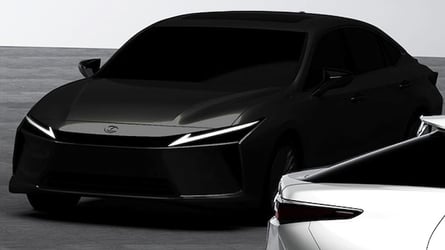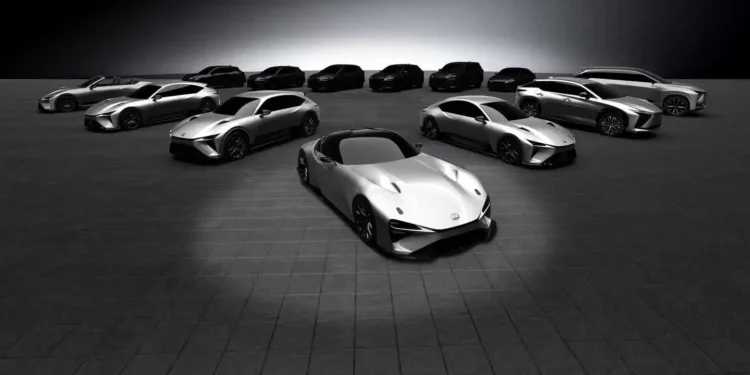Lexus has filed trademarks that seem to indicate it is planning to launch a fully electric version of its ES sedan. The ES is the more posh version of the Toyota Camry, with which it shares its front-wheel-drive platform, so the arrival of an electric ES could also signal the eventual introduction of a cheaper electric Camry.
Based on the trademarks uncovered by AutoGuide, Lexus is looking to introduce two electric versions of the ES: the ES350e and the ES500e. The only other Lexus whose name ends with a lowercase “e” is the RZ (available as the single-motor, front-wheel drive RZ300e and dual-motor RZ450e), so this patent filing strongly suggests plans for an electric ES.
Lexus and parent company Toyota don’t offer electric sedans yet
Lexus tepidly launched its first EV, the RZ crossover, which is a posh version of the Toyota bZ4X, but no entrants in the highly competitive electric sedan segment.
Lexus has not officially announced that it plans to launch a battery-powered sedan—although it did mention plans to sell 1 million EVs by 2030—but it showcased the rather attractive Lexus Electrified Sedan Concept as part of an entire fleet of design studies revealed at the end of 2021.
At the time, we speculated that Lexus was eyeing the Porsche Taycan with its future electric sedan—there was even an eye-catching shooting brake study among the concepts, a possible direct rival to the Porsche Taycan Sport Turismo—but now that we know about this electric ES trademark, we believe the future model will be a more affordable car, possibly aimed at the ubiquitous Tesla Model 3.


In the EV group that Lexus provided when it unveiled all of its electric concepts, another sedan (pictured in this article’s opening image) lurked in the background, much closer to production than the more visible models in the front. It is likely the upcoming ES, and the reason behind its being partly obscured could be that it’s the actual production model coming in the next couple of years.
Lexus also showcased an electric sedan concept called the LF-ZC. This very bold-looking vehicle confirms the Japanese design cliché of it being styled using a katana—it looks fantastic. However, that looks a tad too striking and dramatic, even toned down for production, to wear an ES badge, so when Lexus eventually puts it into production in 2026, it will be called something else.
The base ES350e will probably be a single-motor drive vehicle with about 300 horsepower, while the ES500e will get a more powerful dual-motor setup, all-wheel drive and 400 horsepower or more. We don’t know if Lexus plans to use the e-TNGA platform that underpins the RZ and the Toyota bZ4X or if it’s found a way to make fully electric vehicles on the TNGA-K platform it uses in the current ES. If e-TNGA is used, the base electric ES will likely be front-wheel drive, just like the current combustion and hybrid variants.
Toyota also has a ground-up new EV platform in the works, which promises up to 620 miles (1,000 kilometers) of range. Lexus plans to use this platform in the production of the LF-ZC, and it could even have full solid-state batteries that the manufacturer expects to have ready for commercial use by 2027 or 2028.
The current Lexus ES is available with pure combustion or hybrid power, and the range kicks off with the $43,190 ES 250. The range-topping variant is the ES350, which starts at $53,480. With this in mind, we expect the base electric ES350e to start at about $50,000, while the ES500e could cost around $10,000 more. Lexus also trademarked the ES350h name (the current hybrid variant is called the ES300h), so the next-gen ES will also be available with hybrid power and could be the only variant that still burns gasoline.










